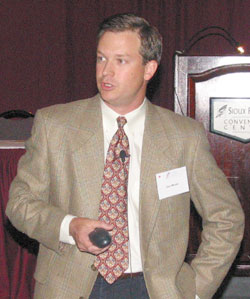
Dan Moser, Kansas State University animal scientist, gives a report on the final results from the NCBA Carcass Merit Project. Moser, a member of the CMP team, said the project has produced a large, multi-breed database of phenotypic information and DNA samples — an important resource in the genetic improvement of carcass merit in beef cattle.